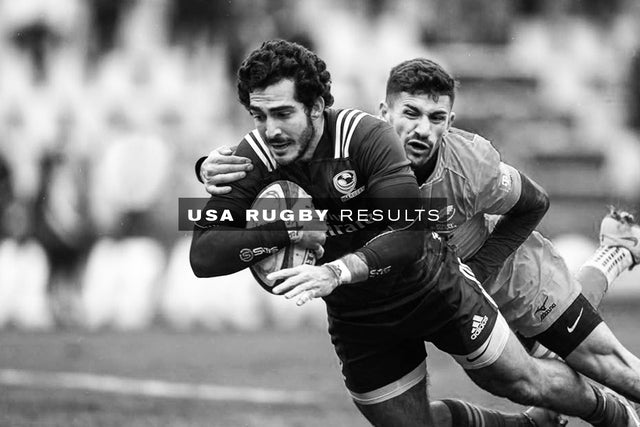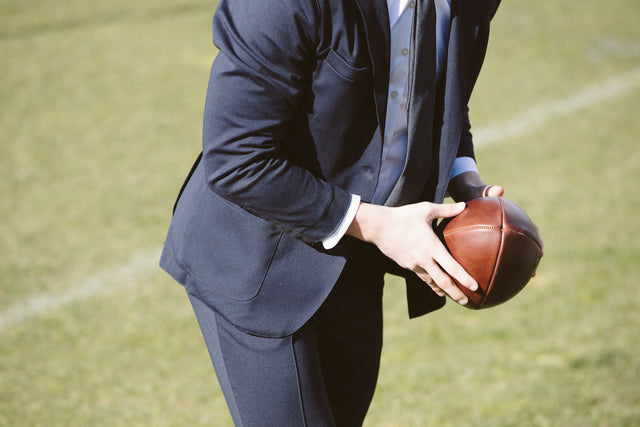USA Eagles Prepare for Domination in a World Cup Year
By: Adam McQueen
There would be no fairytale ending to the USA Eagles’ magical season when the final whistle blew at the Aviva Stadium. The Eagles succumbed to their first test match loss of the year, a 57-14 defeat to Ireland on their home soil. Bitter disappointment cut through the exhaustion on the player’s faces as they fell one win shy of an unprecedented undefeated 2018 campaign. Tatters of tape once holding players together dangled off of their bodies. The last month of grueling international competition had taken its toll.
Nevertheless, a disappointing loss against an Irish team full of fresh faces that had toppled the All Blacks a week prior should take nothing away from the greatest year in Eagles’ history. Instead, the bigger focus should be on the convincing 31-5 win they achieved over Romania in Bucharest, and the gutsy come-from-behind 30-29 victory over Samoa during the November tour.
These results have propelled the United States to 12th in Rugby World Rankings heading into the new year, their highest standing ever. Their November European tour, which has historically led to disappointing results, reaffirmed the strides the Eagles have taken under Gary Gold. Over the past four years – including World Cup 2015 – the United States posted an abysmal 2-11 record in Autumn Internationals. The two wins and two losses posted this season, which includes an ‘A’ level team being fielded against the Maori All Blacks, is a considerable improvement.
So what was different this year that led to the Eagles climbing the World Rugby ladder, and what will 2019 have in store?
Consistency
Nearly winning every game for an entire season obviously requires a level of consistency. Teams don’t put together ten flawless matches in a row (unless you are New Zealand) and as such there must be a consistent base level of performance in specific areas to repeatedly get results.
The Eagles’ heart-stopping win against Samoa exemplified this. Their first ever win over the Pacific Islands nation was not an impeccable performance. In fact, the United States did not play anywhere near their potential. The game became as sloppy as the conditions that they were playing in. However, the Eagles minimized their mistakes, played in the right areas of the field, and withheld the Samoan barrage midway through the game to keep the contest within touching distance in the closing minutes.
The opening 20 minutes were the exact blueprint that Gary Gold would have envisioned for his side. While Samoa repeatedly shot themselves in the foot with ill-discipline, the Eagles methodically marched down the field and camped in their opponents half. Numerous passages of 10+ phases suffocated Samoa and the Eagles sprung to an early 15-0 lead.
More impressive was the United States’ response to the inevitable Samoan eruption. Three tries were scored within a blink of an eye, courtesy of some magical skill from English Premiership stalwarts Tusi Pisi and Ahsee Tuala. The Eagles remained calm throughout, banking upon their much improved set-piece and gaining chunks of yardage in the tactical kicking battle against the Pacific Islanders.
Although the American scrum wasn’t as dominant in November as it had been all year, the lineout continued to run like clockwork. The clinical approach to these portions of the game are what sets the top international teams apart from ‘tier two’ nations. According to Rugby Pass, the USA has had a 92 percent success rate on their scrums, and a 95 percent success rate in the lineout in 2018. This platform, plus two incredible Cam Dolan intercept tries, were enough to put the Eagles in contention, despite a subpar performance.
A touch of class from fly-half Will Hooley sealed the deal, nailing a sideline penalty to snatch the victory at the final whistle. A lot of focus has been placed on Hooley’s incredible kick; however, it was the United States’ disciplined performance in a wild affair that kept them in touching distance for eighty minutes.
Physicality
Rugby has evolved from a contact sport into a collision sport. The battle for the gainline has never been more important. The professionalism of the modern game requires a new level of physicality in order to be successful. Gary Gold has circled this as a point of emphasis – the Eagles’ newfound abrasive playing style has paid dividends all year long.
“We are starting to learn that we require a game that puts them under pressure, that forces them to throw the pass that they shouldn’t.” Gold shared on the Rugby Wrap Up show.
An unrelenting physical approach for the entire eighty minutes is something that has eluded the Eagles and other tier two nations when competing against top teams in years past. This season, the USA out-muscled their opponents in the contact areas each and every game. Only three teams managed 20 or more points against their defense.
The continuous chop tackles versus Scotland in the sweltering heat, the wave of direct forward crash balls off of the scrumhalf against Argentina XV, and the scrum excellence versus Uruguay were all feats of pure physicality that carried the Eagles to victory. Even when the Eagles were running on fumes against Ireland in their last game, Irish head coach Joe Schmidt acknowledged their size and strength.
“The American side, they are really physical and really big.” said Schmidt after their match. “You don’t beat Scotland and not have something in the locker. We knew it was going to be tough.”
The forward pack and bruising center combination of Paul Lasike and Bryce Campbell has spearheaded the Eagles’ success at grinding their opposition down. With only eight caps under his belt, Lasike has already emerged as one of the most indispensable figures in the American lineup. The team has methodically worn down their opposition with battering ram ball carriers. In every match this season – besides Scotland and Ireland – the United States has had at least 50 percent of the possession.
Depth & Coaching
Gary Gold has been at the heart of Rugby USA’s dramatic turnaround. When the South African took over coaching duties in January, American rugby was in limbo with a theoretical professional league preparing to launch. The winless World Cup campaign still lingered.
Now, Major League Rugby is emerging as a viable pipeline for players to prepare for international competition, the Eagles are becoming a dark horse pick to take a big scalp in Japan, and Gold’s men are garnering more attention than ever before. It has been the start of a rapid ascension.
The spine of the American lineup is where their talent lies. Hooker Joe Taufete’e, 8-man Cam Dolan, halfback duo Shaun Davies and AJ MacGinty, and fullback Will Hooley can go toe to toe with anyone.
The Eagles’ success in November without their star MacGinty indicates their growth as a team. The fly-half is a mercurial talent, yet Gold has instilled a playing style that doesn’t overly rely on individual players. Flanker Hanco Germishuys explained that the communication between domestic MLR players and overseas professionals has been instrumental in the tightness of the team-first dynamic.
“A lot of the guys here ask for help from our overseas players and they are willing to help anyone,” Germishuys said. “When they see something wrong they speak up and fix the situation right away. They bring a lot of experience and a lot of talent.”
Fresh young faces, such as Ruben De Haas and David Ainuu, have also integrated into the setup seamlessly. These youngsters, along with the improved weekly standard of competition for domestic players, has blessed Gold with a deep squad to choose from.
Gold has then set a clear standard for the players. They have embraced his direct approach both on and off the pitch. Now the Eagles have an identity.
“He tells the team what he wants,” Germishuys said. “It puts everybody on the same page.”


